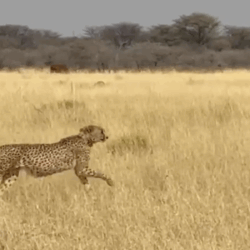Research findings – Cheetah Movement Patterns
-

- by Cheetah Conservation Fund Canada June 27, 2024

Research is a pillar of CCF’s success, addressing real-life issues that impact the wildlife, people and ecology locally and more broadly. CCF’s extensive research initiatives have explored a wide array of topics, including ecology, biology, farming practices, cheetah genetics, and more.
Recently, CCF published a study on cheetah movement patterns. In the wild, a cheetah’s movements across the landscape are influenced by environmental factors and the cat’s unique history. This dual set of factors pose challenges when reintroducing rehabilitated or translocated cheetahs back into the wild, as determining the best-suited habitat for each animal can be intricate.
Given that each cheetah has a distinct life journey and every release site presents its own set of challenges, researchers aimed to enhance their understanding of how a cheetah’s history interacts with its environment to influence its movements. CCF scientists analyzed 15 years of GPS radio collar data from 17 cheetahs residing in diverse landscapes of the Central Plateau of Namibia. These cheetahs included those living in the wild, rehabilitated ones, and those relocated from other areas.
The data revealed interesting insights. Local wild cheetahs exhibited the most extensive range of movement, followed by local rehabilitated cheetahs. On the contrary, relocated cheetahs, unfamiliar with their new territory, covered less ground. Additionally, male cheetahs tended to roam farther than their female counterparts. In years when large prey was abundant, cheetahs displayed reduced movement.
As habitats vital for cheetahs dwindle, this study could serve as a valuable compass for guiding conservation endeavours and the reintegration of rescued or rehabilitated cheetahs into their natural habitats. Over the last century, cheetahs have vanished from nearly 90% of their historical habitats. Today, conservationists are increasingly resorting to the reintroduction of rescued, rehabilitated, and translocated cheetahs to reestablish cheetah populations across their historic territories. As an apex predator, the cheetah has an important role in maintaining a healthy ecosystem that benefits all species around.
You can read the research here.
"Cheetah Tracks" Newsletter Sign-Up
Stay updated on the activities of Cheetah Conservation Fund in Canada, Namibia and Somaliland. We send semi-annual newsletters and info about special events and initiatives. We will not share your email address with any other organization.
Related Reading
-
November 23, 2025
Canadian Veterinarian Reunites With Rescued Cheetahs – Somaliland



